
Sihanoukville, a seaside haven on the southwest coast of Cambodia, is hardly a city. It has long been known as “Kampong Som,” a quiet and very green place full of massive old hardwood trees and mangoes fed by bountiful rains. It is a long and narrow town, and the built-up parts skirt a gorgeous natural shoreline: 14 km stretch from the container port in a sensuous curve of evergreen-shaded powdery white beaches, broken occasionally by rocky, tree-shrouded headlands.

Photo Credit: John Dough
In the middle of town, a pier serves tourists eager to reach charming and unspoiled island resorts only an hour away. Heading south from the Serendipity pier, the beach becomes wider and the evergreens grow taller.
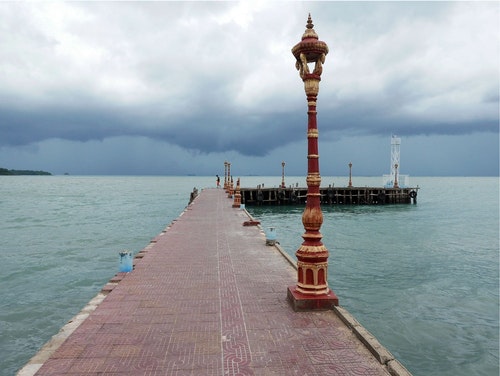
Photo Credit: John Dough
The beaches sweep out and in again, dangling like a sunbather’s long and lazy blonde tresses — all the way to a quiet spot called Otres, a natural beach playground.

Photo Credit: John Dough
There are few main roads in of Sihanoukville, and only one narrow two-lane highway links the town to Phnom Penh, the capital city 220 km to the northeast. But these days, that little highway is crowded with heavy trucks, buses and cars. By the year 2023, a new four lane road will be constructed with expertise and cash, largely a gift from China.

Photo Credit: John Dough
Only one year ago, Sihanoukville was a much quieter city than it is today. One could drive down the main street, Ekareach, on a week night and encounter only a few cars and motorcycles. Now, new white vans, tourist buses, and SUVs full of Chinese tourists and migrant workers shuttle up and down streets at all hours of the day and night.

Photo Credit: John Dough

Aside from this busy movement of humanity, large-scale construction works are in process along the coast and across the whole town. The construction brings huge lumbering cement trucks into town after visiting one of dozens of new cement plants, most of them crowded along the main highway #4 to Phnom Penh, the country’s capital.

Photo Credit: John Dough
During the past year, Chinese investors have arrived in droves, quickly buying up large chunks of real estate. Many apartment dwellers were faced with evictions. Long-established tourist businesses have shut suddenly due to impossible rents and forced eviction. This sudden influx and displacement, along with the aggravation of reckless, hurried traffic and dustier roads, has spurred many expats to leave town en masse.
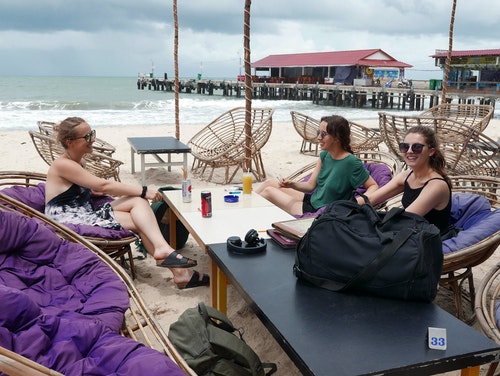
Photo Credit: John Dough
The twenty-something backpacker crowd has yet to disappear entirely, but since most of them desire fresh air and clear seas, the majority now hop ferries to idyllic islands only an hour away because cheap lodgings are no longer available in town. Many expats and youngsters who have refused to leave have taken refuge in a small village of little hotels and bungalows 10 kilometers south of town, right behind Otres Beach.

Photo Credit: John Dough
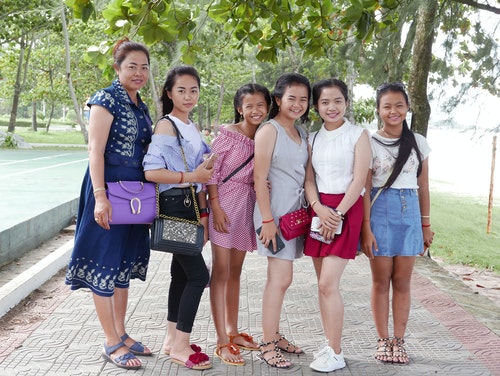
The most striking effect of the mass Chinese invasion is impossible to ignore: hundreds of Cambodian family-owned businesses have been forced to close down. Most of these people left for the provinces or other towns immediately after the land they were renting was scooped up by big-spending Chinese investors. Of course, there are plenty of new job opportunities for locals, but most are limited to service roles at the casino hotels, construction helpers, or drivers of big trucks. A lucky few locals work in the real estate market, and many of them are police!

Photo Credit: John Dough
The Chinese are building dozens of edifices simultaneously. Almost all are copies of each other: towering condo-hotels and box-like concrete slab casinos. They are going up right beside each other along the beach road and on major streets across town. Virtually everything but the cement and sand is imported by sea from China. The imports include: glass, steel girders, floor tiles, cut stone, heavy trucks, diggers, earth-movers and the ubiquitous towering yellow steel construction cranes.
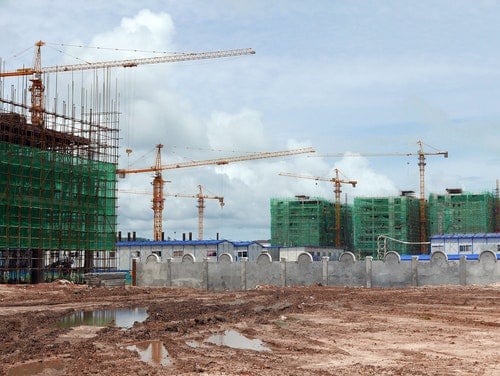
Photo Credit: John Dough
Most of the skilled engineers and workers are Chinese, too. Some Indian coders have been contracted to set up computer systems. Nepali workers and security guards have been sighted at the casinos. But few local Cambodian laborers actually work on the construction sites. They are not considered skilled or hard-working enough for the Chinese. The Chinese work fast: several projects will be completed by year-end, having broken ground less than twelve months ago. Rents and land prices have tripled and quadrupled over the past two years, making business impossible for smaller players.

Photo Credit: John Dough
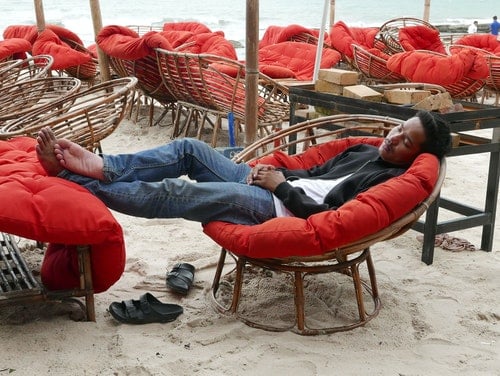
Passenger jets arrive daily to Sihanoukville’s modest airport, ferrying groups of Chinese tourists eager to enjoy their package holidays. But it appears that the majority of arrivals from China, at least for the moment, are not yet all tourists. Alongside tourists come rich investors, skilled and ordinary workers, and quite a few small-scale entrepreneurs who want to open a hair salon or restaurant. Sometimes, a whole group of young Chinese men arrive, destined for employment at an “online casino” — live-dealing across video-chat networks.
Most of the video-gamblers are located in China proper, where it is illegal to gamble in the flesh anywhere. A few very rich Chinese men have come to live here. Some Cambodians who have had a sold a lot of the land are now driving Rolls Royces and Hummers alongside them, too.

Photo Credit: John Dough
Speculation is rife as to the true source of the cash influx, and many cynics attribute it to money laundering networks from various black and gray businesses across China, and even from as far away as the United States. Some others scoff and believe the money is coming directly from the government of China itself, which is unlikely and improbable.
The actual sources of the money seem to be of little concern to the central government of Cambodia. That devil-may-care attitude has caused problems: the provincial governor of Sihanoukville, Mr. Yun Min, issued an official report to the Council of Ministers of Cambodia in January of 2018. The governor complained of illegal activities like kidnapping and civil disorder instigated by Chinese gangsters in the city of Sihanoukville. Yet his report has not deterred construction, nor has it limited the flood of new arrivals.
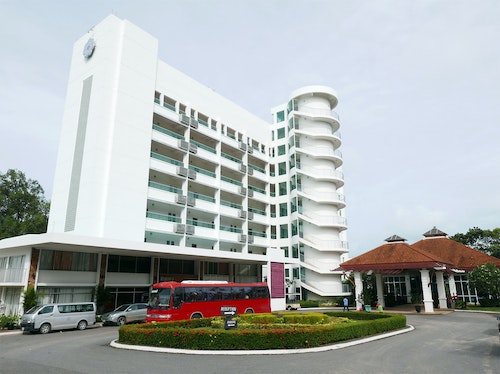
Photo Credit: John Dough
In the summer of 2017, the State Council of China issued an edict banning its citizens from engaging in foreign investment in overseas gambling businesses. However, as Communist Party edicts often go, they are not always clearly defined or enforced. So, why exactly might the Chinese government choose to overlook the case of Sihanoukville?
First, it goes without saying that current casino-condo developments in Sihanoukville do not accord with the current Belt and Road Initiative (BRI) as formally approved by the Chinese state. The official aim of the BRI is to link China with all neighboring Eurasian states by building roads, train links and bridges.

Photo Credit: John Dough
But there is another quite obvious motive that does accord with Chinese government policy. Sihanoukville creates a new link in the chain of global ports that China has dubbed “the 21st-century Maritime Silk Road Strategy” (21世纪海上丝绸之路). The fledgling container port in Sihanoukville is growing, and a new port is planned for Stueng Hav fishing village, several kilometers up the coast to the northeast. The existing container port already serves as a convenient drop-off point for equipment and raw materials and Chinese imports. Already, Sihanoukville port serves cruise-ship visitors, whose numbers are expected to multiply after the new and larger hotels open soon.
Yet there is more to the “Maritime Silk Road” than meets the eye. Sihanoukville port is a quiet, seemingly out-of-the-way spot. However, it presents a prime strategic location for operating a military outpost at the top of the South China Sea. Cambodia is the only nation in southeast Asia with a wide-open door to the Chinese. Next door, Vietnam, Thailand and Malaysia are completely out of bounds for the Chinese military. Direct foreign investment by the Chinese in these nations is also much more strictly regulated than in Cambodia.
On June 18, it was announced that the Chinese government awarded a US$130 million aid package to the Cambodian military after a meeting between visiting Chinese Defense Minister General Wei Fenghe and Cambodian Lieutenant General Mao Sophan. Defense Ministry spokesman General Chhum Sucheat explained that General Wei Fenghe said that the Chinese gift was intended to mark 60 years of good diplomatic relations between the two nations.
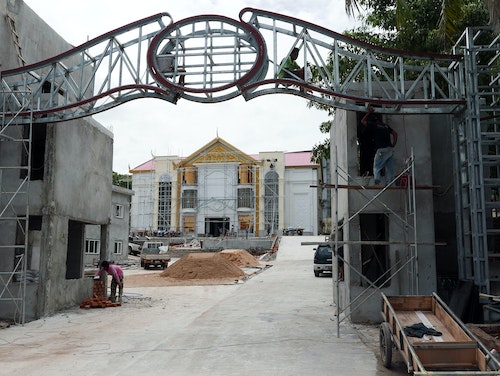
Photo Credit: John Dough
Relations are very cozy. The Chinese state is being driven by the current leadership to expand its global political influence and power. This drive seems to be the new raison d’être for China’s existence: a once reclusive and closed state has opened its arms to enfold the globe. Cambodia is a ready partner, and so, Sihanoukville has suddenly become a frenzy of unregulated investment and construction.
This close coziness of elites has left the public wondering at the existence of any sort of central plan. Nothing has been shared with anyone at the local level. New projects are announced first in Phnom Penh and often nobody in Sihanoukville knows about any details until permits for construction must be bought. Little or no zoning regulation is effectively in place under the jurisdiction of the provincial government of Sihanoukville.
Instead, questions of zoning tend to reflect previous traditions of legislation; or, more sadly, whatever the bargaining between big players can lead to: examples of bent and broken rules are now evident in the shape of the massive “Blue Bay Condo,” which is now almost finished on Independence Beach. On the beaches, all land officially belongs to the state, and no construction is permitted unless it is approved as a “public-private entity” by the central government.

Photo Credit: John Dough
Yet again, there are no apparent limits upon the amount of land up for grabs. Here’s another recent example: on June 20 a celebration was held in Phnom Penh promoting yet another new Sihanoukville project called “Wisney World.” This mammoth leisure resort and theme park project will cost US$1 billion. But the provincial governor of Sihanoukville claims to have no knowledge of the newly announced project.
Planning, if there is any, seems to be taking place entirely according to the deals that Cambodia’s urban elite is willing and able to entertain with their wealthier Chinese friends.
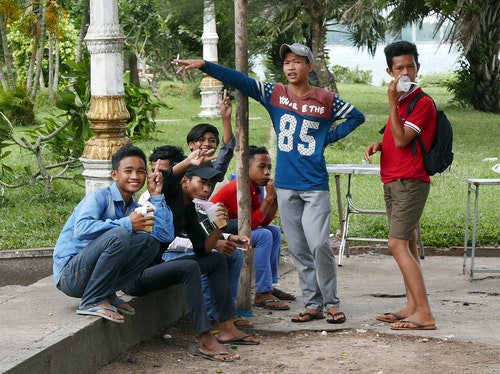
Photo Credit: John Dough
Sihanoukville presents a sociological conundrum: is the city still an integral part of the sovereign state of Cambodia? Is the PRC committed to put over nothing less than a grandiose 21st-century neo-colonial take over? At present, it appears so.

Photo Credit: John Dough
The metamorphosis has been sudden and shocking. The sense of neo-colonialism is quite uncanny: the vast majority of the newly arriving Chinese are displacing the existing population rather than merging and assimilating with them. That upsetting reality is the critical element at play in the current scenario. Of course, many of the town’s Cambodian residents were itinerant in the first place. So, does it matter much if the local folk have been pushed back to their home provinces?
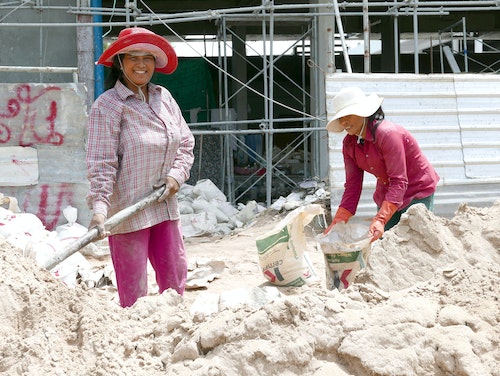
Photo Credit: John Dough
Curiously, the Chinese influx are either totally unaware or entirely careless of their displacing effect. The Chinese appear oblivious to anything but Chinese things, and they exude a sort of naive yet brash ignorance, failing to see that Cambodians have their own social customs, ways of life, food or religious culture. So, the vast majority of Chairman Mao’s great-grandchildren remain insulated and largely disinterested about getting to know anyone outside their familiar cultural, economic and linguistic domain.

Photo Credit: John Dough
Nevertheless, Sihanoukville stands ready to serve China’s tourists, gamblers and the PRC government’s desire to command the South China Sea. It is quite the devil’s bargain, but nobody has shown much fear yet.
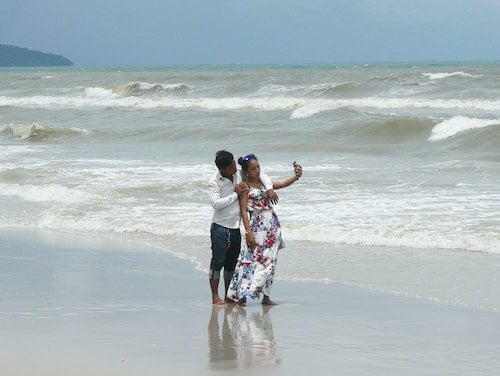
Photo Credit: John Dough
However, the fact remains plain: ordinary Cambodians and the citizens of Sihanoukville are more than a trifle skeptical. Some feel offended and shoved aside, as if by a rude and unruly tourist. Nowhere on Earth is a city so vulnerable to the bulk economic force of outsiders.

Photo Credit: John Dough
This neo-colonial phenomenon is very real and, at present, wholly irreversible for the little seaside town of Sihanoukville.

Photo Credit: John Dough

Photo Credit: John Dough
https://international.thenewslens.com/article/99562
TNL Editor: Nick Aspinwall
